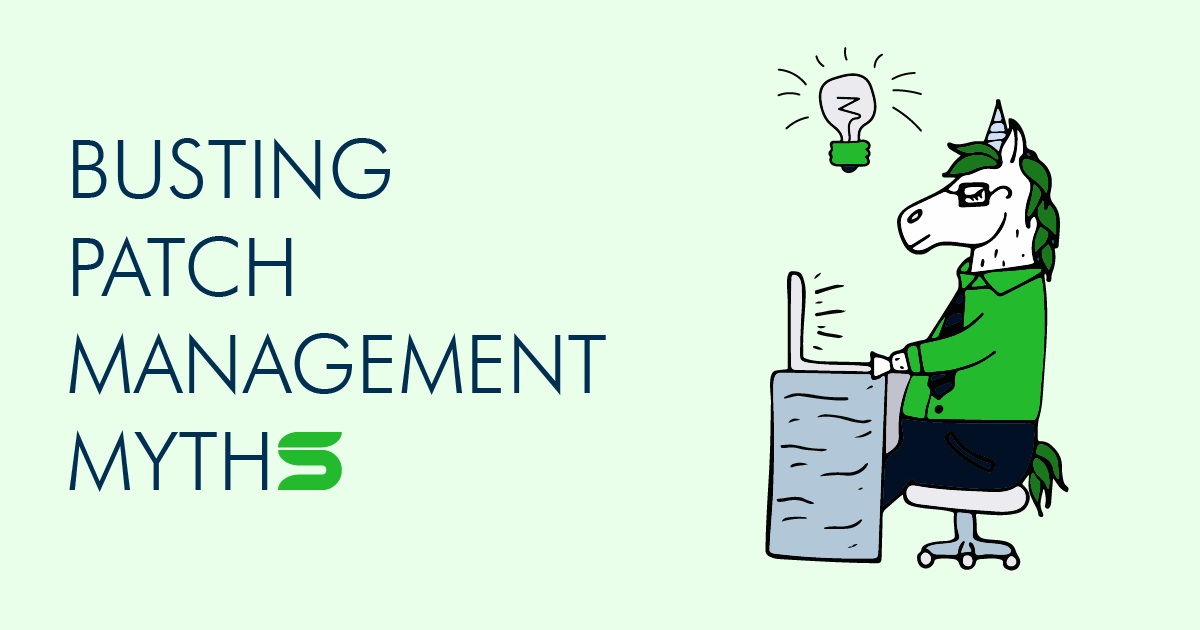Patching is one of the best security practices followed to fix software vulnerabilities. Studies show that much serious ransomware like WannaCry could have been easily prevented if software updates were patched on time. For cyber attackers, un-updated software is always a welcome sign to intrude the network. Even though, many of us know patching is crucial for enterprise security, there are various myths and misbeliefs which are still prevalent among the IT administrators. Auto patching with a patch management software can be beneficial to many. Patching is hard, time-consuming and challenging is what IT admins think and neglect to do it on time.
Here are the 6 common myths and misbeliefs about patching which must be taken care of:
1) “Patching is not a priority and it can be done later”
“Later” is the word which we avoid when it comes to updating missing patches. We never know that even a small delay might lead to serious security havocs. Many cybersecurity practitioners suggest that we should patch within a few hours from an available update. But many administrators are still neglecting software updates and are postponing it to a later time. Cybercriminals are working actively and even a small time-lapse will help them roll out a cyber-attack. Administrators should always ensure that they patch their endpoints without any delay. A patch management tool is essential.
2) “It patching enough if the software with most vulnerabilities are there”
This is another myth administrators often believe and practice in their network environment. In general, we might notice that many applications will nag their user to perform an update. We cannot neglect this. Just by patching the software with vulnerabilities will not save your network from security breaches. Recommending that all the applications which we install in the endpoints patch continuously irrespective of their vulnerability range.
3) “Patching third party applications is not important to secure network endpoints”
Administrators often believe that it is enough if they patch their Microsoft applications and ignore other third-party applications. But the fact is, a lot of security breaches have happened in the past by missing updates of various third-party applications like Adobe, Java, Firefox etc. Delta Charlie was an infamous botnet malware which highly exploited Adobe Flash player applications. All this clearly states that third-party application patching plays a vital role in safeguarding the systems from security threats.
4) “Security updates should not be deployed immediately”
Some organizations believe that security patches might change the application’s functionality and delay their deployment. Some even believe that it may lead to even more vulnerabilities. Studies show that “72% of managers are afraid to apply security patches right away because they could ‘break stuff’”. Out of all the updates that need patching, patching security updates is extremely crucial. To overcome this fear, administrators should rather test these updates in a test environment and immediately deploy them on other computers without any delay.
5) “If patching is done once, endpoints are secured”
Many IT administrators have the misconception that if patching is done after securing. It is important to note that patching is not a one-time process. Updates keep coming then and there. Every update contains a set of fixes with it and it is necessary to deploy them on the network endpoints. Patching is a continuous process that follow in the network regularly to secure the systems from potential attacks.
6) “Patching is a time-consuming process and it takes hours to complete”
There is no denial to the fact that patching consists of various steps from scanning missing updates, downloading patches from vendor sites to deploying them on multiple computers. But this should never stop an administrator from deploying the updates on time. We can automate these steps, and patching can still be an effortless process in securing the network.
SecPod SanerNow comes with an effective patching technology to put an end to all these patching myths and misbeliefs. With SanerNow, one can automate the complete steps of patch management is no time. All an IT administrator has to do is deploy the Saner agents on the endpoints, create automatic deployment tasks and easily enroll the patches on the enterprise computers.
Get a Free Trial of SecPod SanerNow and put all these patching misconceptions at bay. It is time to make patching a simple daily routine.

